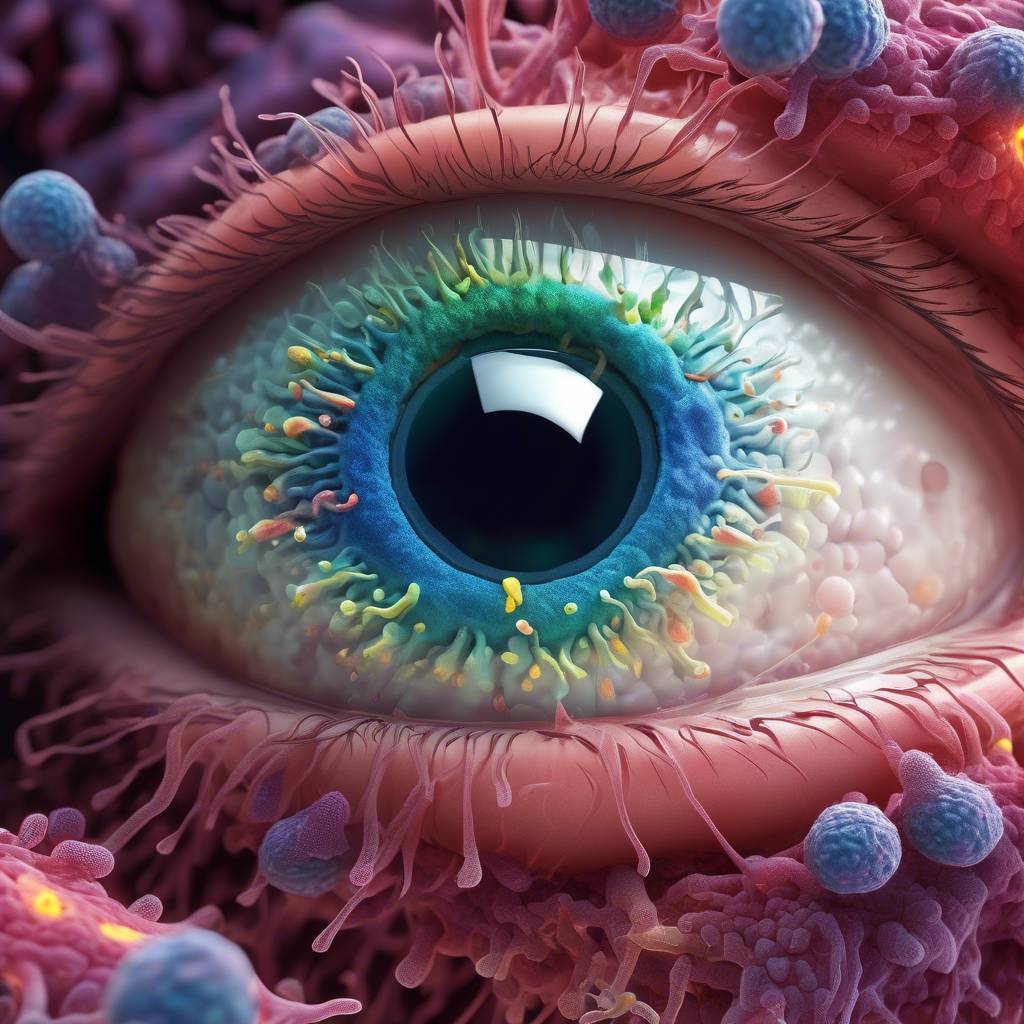Research has shown that several areas of the body, including the gut, skin, mouth, nose, ear, and eyes, have their own microbiomes. One specific area of interest has been the eye microbiome and its potential role in eye diseases such as dry eye. A recent study conducted by researchers at Stephen F. Austin State University found that the eye microbiomes of healthy eyes and those with dry eye differ in their mix of microbes. This discovery could lead to improved treatments not only for dry eye but for other eye conditions as well. The eye microbiome refers to the community of bacteria and other microorganisms present on the conjunctiva and cornea of the eye.
Dr. Alexandra Martynova-Van Kley, professor of biology at Stephen F. Austin State University and leader of the research team, explained that research suggests there may be a connection between dysbiosis in the gut microbiome and the presence of pathogenic microbes in other areas of the body, including the eyes. This indicates that the microbes identified in the eye microbiome may function similarly to those in the gut microbiome. In addition to dry eye, scientists have been researching the impact of the eye microbiome on other eye diseases such as age-related macular degeneration, glaucoma, diabetic retinopathy, and cataract. Understanding the composition of the eye microbiome in different eye conditions may lead to better diagnostic, treatment, and prevention strategies for these diseases.
For this study, the researchers collected eye samples from 30 participants and analyzed them using 16S rRNA sequencing and bioinformatic analysis. The results showed that the dominant bacteria species in the eye microbiomes of participants with healthy eyes were Streptococcus and Pedobacter, while the prevalent species in the eye microbiomes of participants with dry eye was Acinetobacter. Dr. Martynova-Van Kley emphasized the importance of identifying the causes of dry eye in order to improve outcomes for individuals suffering from this condition. Further research will focus on increasing the sample size and understanding the signaling pathways associated with the indicator species in dry eye conditions.
Experts in the field, including Dr. David Geffen and Dr. Benjamin Bert, acknowledge the significance of this research and its potential to revolutionize treatments for dry eye and other eye conditions. Dr. Geffen believes that modifying the microbiome of the eye could be a breakthrough for millions of dry eye sufferers. Dr. Bert points out that studies like this one highlight the multifactorial nature of dry eye and the importance of considering changes in the normal bacteria on the surface of the eye when determining treatment strategies. Both experts agree that future research on the eye microbiome, for dry eye and other eye conditions, is essential for expanding our understanding of the gut-eye axis and developing targeted therapies.
Overall, experts predict that the study of the eye microbiome is still in its early stages and will continue to evolve over time. Dr. Martynova-Van Kley believes that research on the ocular microbiome is rapidly advancing and holds great potential for enhancing our understanding of various eye diseases. Dr. Bert anticipates that future studies will explore changes to the eye microbiome in different patient populations and conditions, shedding more light on how these changes impact eye health. As the field progresses, researchers may uncover new insights and potential therapeutic targets for a range of eye conditions, ultimately improving outcomes for patients.









